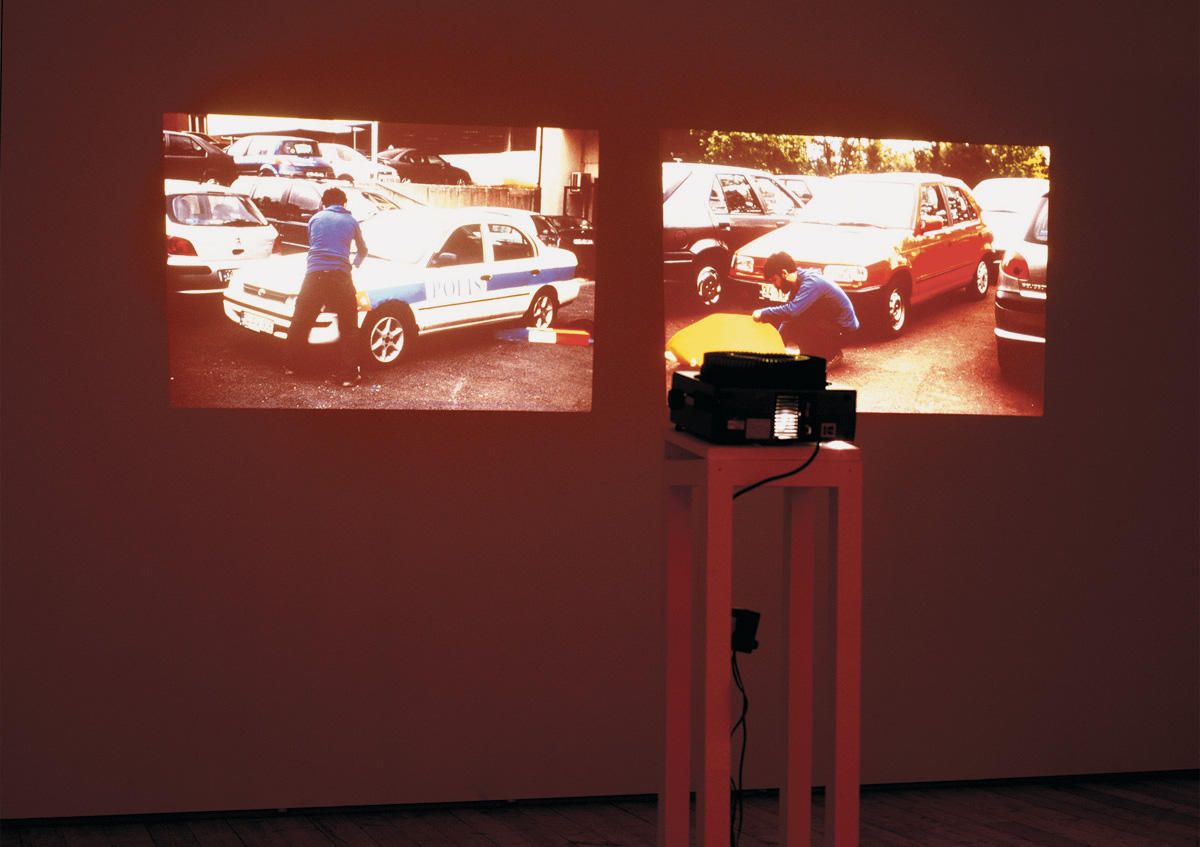
Vienna
A Forest and a Tree
Kunsthalle Exnergasse
March 15–April 14, 2007
The presentation of non-hegemonic artistic positions at the Kunsthalle Exnergasse isn’t new. On the contrary, this decidedly alternative Vienna art institution has historically made a conscious effort to include feminist, young, unknown, and even non-Western artists in the space’s diverse themed exhibitions — all without seeming to labor under the burdensome rubric of “otherness.” But a recent exhibition at the Kunsthalle took a stab at a different approach. A forest and a tree, organized by Pelin Uran, proposed to raise the question of whether it is possible to engage with works outside of standard national, ethnic, and cultural frameworks — a worthy endeavor, to be sure. In spite of its noble ambitions, however, there was little that connected the individual works within the exhibition beyond their being vaguely political and the products of rather established artists.
Yael Bartana’s video Trembling Time (2001), for example, has made countless appearances, already having been shown at the 2003 Manifesta in Ljubljana, among other locales. The video, which depicts a moment of silence on Israel’s national Day of the Fallen Soldier, shows a multi-lane motorway on which drivers suddenly slow down for the brief pause of remembrance. The artist blurs the lights, slows down the video’s movement, and in this way charges this nocturnal ritual with an eerie, almost unsettling effect; even to viewers unfamiliar with the specific context, this appears as a subtle meditation on the power of ritual.
Equally minimal in nature, Jakub Ferri’s piece commented on the commodifying tendencies of the art world. In Save Me, Help Me (2003), the artist, sitting on his bed, addresses potential collectors and curators, trying in his broken English to sell his works to them. In doing so, he presents not only his own works, but also himself: a young cultural producer, utterly exotic, bowing to the logic of the neoliberal mode of exchange.
While Ferri treated his desire to attain success unceremoniously and used irony to riff on the world in which he is situated, Emily Jacir, Phil Collins, and Esra Ersen address serious political and aesthetic concerns, admittedly of a diverse nature, in relation to the themes of cultural identity, dislocation, or exile. In from texas with love (2002) Emily Jacir drives her car for an hour on a Texas highway. The video screen showed a typical American landscape; viewers could listen with headphones to a soundtrack chosen by the artist’s Palestinian friends. Jacir seems to imply, a borderless journey such as this one would never possible in Palestine. In addition, the link Jacir establishes with Palestine on her drive through Texas prompts consideration of the similarities between the Israeli wall and the recent construction of the Texan “Tortilla Wall” to keep out Mexicans, not to mention the problematic notion of “freedom” that is embedded in the American vision of self.
Resonating with Jacir’s video is Collin’s how to make a refugee (2000), which treats the depiction of refugees in the international media; Collins questions the mechanisms by which the media constructs reality, as well as the documentary genre itself. Esren, in the meantime, follows the life of street children in Istanbul in her wryly named video documentary This is Disney World (2000). The video provided a sensitive depiction of children on the fringes of society. Sislej Xhafa also addressed the brutality of everyday human experience; his video Stock Exchange (2000) draws an illuminating analogy between the flow of money in the stock market and the flow of people through a train station, a treatise on the brutal nature of human migration.
Ahmet Ögüt, for his part, presented a double-slide projection entitled Somebody Else’s Car (2005). Here, the artist turned two parked cars into a taxi and a police car, in a sort of performative vandalism. His intervention, though amusing, could have benefited from an emphasis on a specific context that bred the work, and left me pondering the value of straying from the particularity of geography or politics.
In the end, Uran’s intention was to create conditions in which one could see ‘the forest and the trees,’ both the universal and the specific. It was, in effect, the trees that were sometimes missing from the show, as in Ögüt’s video. Uran’s critique of the Western art world’s fixation on the Other didn’t stop her from selecting already well-established works within that very canon of otherness (there is one).
But perhaps her aims are unrealizable, for it is difficult to describe processes of exclusion and inclusion in the art world without falling into the very trap one is trying to step away from. The exclusive presentation of so-called “non-Western positions” invokes that very “thinking of difference” that the curator obsessively attempts to resist. Perhaps we’re better off simply engaging with artworks without the strenuous attempt to divest them of context.